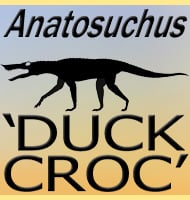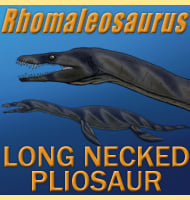In Depth
Five neck vertebrae may not be much to go on when describing a pterosaur, but the elongated vertebra of Phosphatodraco are a signature feature of the azdarchid group of pterosaurs. The vertebra of Phosphatodraco are also quite unique in themselves by being elongated at the base as well as higher up and also revealing the presence of neural spines. These caudal vertebrae have been speculated to have been modified dorsal vertebra from the back, and would have served to extend the characteristically long azdarchid neck even further. This would have allowed Phosphatodraco to move its head over a larger area while hunting without the need for re-positioning its body so often.
Further Reading
Further reading- A new azhdarchid pterosaur from the Late Cretaceous phosphates of Morocco. Evolution and Palaeobiology of Pterosaurs. – Geological Society, London, Special Publications 217:79-90. – X. Pereda Suberbiola, N. Bardet, S. Jouve, M. Iaroch�ne, B. Bouya & M. Amaghzaz – 2003.









